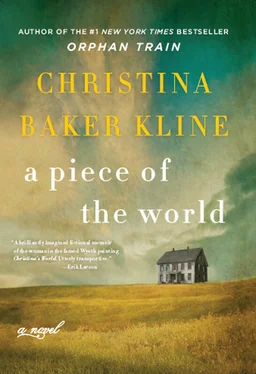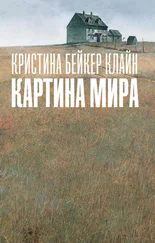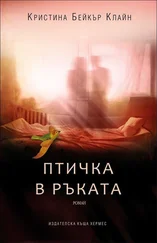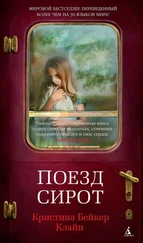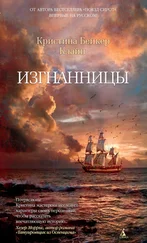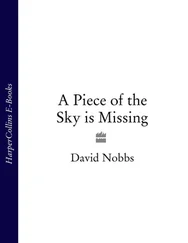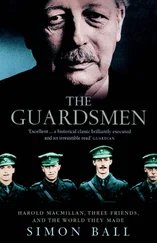I look back at the painting. The girl is low to the ground but almost appears to float in space. She is larger than everything around her. Like a centaur, or a mermaid, she is part one thing and part another: my dress, my hair, my frail arms, but the years on my body have been erased. The girl in the painting is lithe and young.
I feel a weight on my shoulder. A hand. Andy’s hand. “I finally finished it,” he says. “What do you think?”
I look closely at the girl. Her skin is the color of the field, her dress as bleached as bones in the sun, her hair stiff grass. She seems both eternally young and as old as the land itself, a line drawing in a children’s book about evolution: the sea creature sprouting limbs and inching up from shore.
“It’s called ‘Christina’s World,’” he says. “Betsy titled it, like she always does.”
“Christina’s world?” I repeat dumbly.
He laughs. “A vast planet of grass. And you exactly in the middle.”
“It’s not quite . . . me, though, is it?” I ask.
“You tell me.”
I look at the painting again. Despite the obvious differences, this girl is deeply, achingly familiar. In her I see myself at twelve years old, on a rare afternoon away from my chores. In my twenties, seeking refuge from a broken heart. Only a few days ago, visiting my parents’ graves in the family cemetery, halfway between the dory in the haymow and the wheelchair in the sea. From the recesses of my brain a word floats up: synecdoche. A part that stands in for the whole.
Christina’s World.
The truth is, this place—this house, this field, this sky—may only be a small piece of the world. But Betsy’s right: It is the entire world to me.
“You told me once you see yourself as a girl,” Andy says.
I nod slowly.
“I wanted to show that,” he says, gesturing at the painting. “I wanted to show . . . both the desire and the hesitation.”
I reach for his fingers and draw them to my lips. He’s startled, I can tell; I’ve never done this before. It surprises me too.
I think about all the ways I’ve been perceived by others over the years: as a burden, a dutiful daughter, a girlfriend, a spiteful wretch, an invalid . . .
This is my letter to the World that never wrote to Me.
“You showed what no one else could see,” I tell him.
He squeezes my shoulder. Both of us are silent, looking at the painting.
There she is, that girl, on a planet of grass. Her wants are simple: to tilt her face to the sun and feel its warmth. To clutch the earth beneath her fingers. To escape from and return to the house she was born in.
To see her life from a distance, as clear as a photograph, as mysterious as a fairy tale.
This is a girl who has lived through broken dreams and promises. Still lives. Will always live on that hillside, at the center of a world that unfolds all the way to the edges of the canvas. Her people are witches and persecutors, adventurers and homebodies, dreamers and pragmatists. Her world is both circumscribed and boundless, a place where the stranger at the door may hold a key to the rest of her life.
What she wants most—what she truly yearns for—is what any of us want: to be seen.
And look. She is.
WHEN I WAS EIGHT YEARS OLD, growing up in Bangor, Maine, my father gave me a woodcut by a local artist inspired by Andrew Wyeth’s Christina’s World . It reminded him of me, he said, and I understood why: our shared name, the familiar Maine setting, the wispy flyaway hair. Throughout my childhood I made up stories about this slight girl in a pale pink dress with her back to the viewer, reaching toward a weathered gray house on a bluff in the distance.
Over the years I came to believe that the painting is a Rorschach test, a magic trick, a slight of hand. As David Michaelis writes in Wondrous Strange: The Wyeth Tradition , “The down-to-earth naturalism of Wyeth’s paintings is deceptive. In his work, all is not as it seems.” Andrew Wyeth’s paintings always have an undercurrent of wonder and mystery; he was fascinated with the darker aspects of human experience. You get glimpses of this in the arid, dry-as-bones grasses rendered in startlingly precise detail, the wreck of a house on a hill with a mysterious ladder leading to a second-story window, a lone piece of laundry floating like an apparition in the breeze. At first glance the slim woman in the grass appears to be languidly relaxed, but a closer look reveals odd dissonances. Her arms are strangely thin and twisted. Perhaps she is older than she appears. She seems poised, alert, yearning toward the house, and yet hesitant. Is she afraid? Her face is turned from the viewer, but she appears to be gazing at a darkened window on the second floor. What does she see in its shadows?
After I finished writing my novel Orphan Train , I began to look for another story that would engage my mind and heart as completely. Having learned a great deal about early-to-mid-twentieth-century America as part of my research, I thought it would be fruitful to linger in that time period. I’d become particularly interested in rural life: how people got by and what emotional tools they needed to survive hard times. As with Orphan Train , I liked the idea of taking a real historical moment of some significance and, blending fiction and nonfiction, filling in the details, illuminating a story that has been unnoticed or obscured.
One day, several months after that novel came out, a writer friend remarked that she’d seen the painting at the Museum of Modern Art in New York and thought of me. Instantly, I knew I’d found my subject.
For the past two years I’ve immersed myself in Christina’s world. I sat in front of the actual painting for hours at the Museum of Modern Art in New York, listening to the enthused, perturbed, intrigued, dismissive, passionate comments of passersby from all over the globe. (My favorite, from a Danish woman: “It’s just so . . . creepy.”) I studied the work of all three famous-artist Wyeths—N.C., his son Andrew, and Andrew’s son Jamie—to get a sense of the rich and complex family legacy. In Maine I became intimately familiar with the Farnsworth Museum in Rockland, which has an entire building devoted to Wyeth art, and the Christina’s World homestead in Cushing, an old saltwater farm that is now part of the Farnsworth. I interviewed art historians and American historians and was lucky to get to know several tour guides from the Olson house, who sent me articles and letters I never would have discovered on my own. I read biographies, autobiographies, obituaries, magazine and newspaper articles, art histories, art books, and criticisms. I read more than I needed to about the Salem Witch Trials, which play a role in the family’s history. (So interesting!) I collected postcards and even bought a print of Christina’s World to hang on my wall.
Here’s what I discovered. Christina Olson, descended on one side from the notorious chief magistrate in the Salem Witch Trials and on the other from a poor Swedish peat-farming clan, was uniquely poised to become an iconic American symbol. In Wyeth’s painting she is resolute and yearning, hardy and vulnerable, exposed and enigmatic. Alone in a sea of dry grass, she is the archetypal individual against a backdrop of nature, fully present in the moment and yet a haunting reminder of the immensity of time. As MoMA curator Laura Hoptman writes in Wyeth: Christina’s World , “The painting is more a psychological landscape than a portrait, a portrayal of a state of mind rather than a place.”
Like the silhouetted figure in James Whistler’s Whistler’s Mother (1871) and the plain-featured farm couple in Grant Wood’s 1909 painting American Gothic , Christina embodies many of the traits we have come to think of as distinctively American: rugged individualism and quiet strength, defiance in the face of obstacles, unremitting perseverance.
Читать дальше
Конец ознакомительного отрывка
Купить книгу
